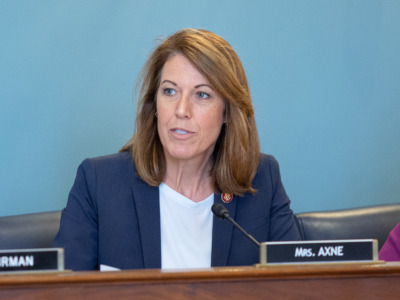A proposed $25-per-acre incentive for cover crops failed to survive the final version of a newly enacted climate law, but some lawmakers are pushing to add a more modest program to the next farm bill.
Reps. Sean Casten, D-Ill., and Cindy Axne, D-Iowa, have introduced the Conservation Opportunity and Voluntary Environment Resilience Program (COVER) Act, which would offer farmers a $5-per-acre discount on their crop insurance premiums. The program is modeled after state incentives in Illinois, Indiana and Iowa as well as a trial program the Biden administration offered in 2021 and 2022 for farmers with crop insurance.
The $25-an-acre payments were included in the Build Back Better bill that passed the House last year, but the incentive was left out of the Inflation Reduction Act that the Democratic-controlled Congress passed last month. The Inflation Reduction Act does increase funding for the Environmental Quality Incentives Program and the Conservation Stewardship Program, both of which can assist farmers with cover crop adoption, but neither would have the large-scale impact that a national incentive program could have.
The COVER Act has support from the American Farmland Trust, the Illinois Farm Bureau, Practical Farmers of Iowa, the National Wildlife Federation and the Natural Resources Defense Council, as well as other agricultural and environmental groups. Earlier this year, Iowa Agriculture Secretary Mike Naig told Agri-Pulse he was excited about the prospect of the $5-per-acre discount being included in a future farm bill.
But with the drafting of a new farm bill months away, there’s still a lot of discussion to be had over its potential inclusion.
“Cover crops are an effective and environmentally-friendly way to enrich the soil for higher crop yields, and we’ve seen the success of cover crop programs right here in Iowa,” Axne said in a release. "The COVER Act will make this program available nationwide so more farmers can take advantage of cover crops and help rebuild their soil organic matter.”
 Rep. Cindy Axne, D-Iowa
Rep. Cindy Axne, D-IowaThe USDA created its $5 incentive program, the Pandemic Cover Crop Program, in 2021 and reauthorized it in 2022. The agency enrolled more than 12.2 million acres of cover crops into last year’s program at a total cost of $59.4 million, according to American Farmland Trust.
Casten and Axne’s bill would create the “Good Steward Cover Crop Program,” which provides producers with the same $5 per acre subsidy when they plant cover crops for conservation purposes. The program, they note in a press release, would be fully voluntary and would not require farmers to plant cover crops in order to be eligible for crop insurance.
In addition, the bill would earmark $5 million for technical assistance, outreach and program support.
Samantha Levy, the conservation and climate policy manager for the American Farmland Trust, said the group hopes the bill will gain bipartisan support, especially with past farmer interest in both the USDA and state-level programs.
Interested in more coverage and insights? Receive a free month of Agri-Pulse!
“Crop insurance is there to reduce risk and planting cover crops builds resilience on the farm, which also reduces risk,” Levy told Agri-Pulse. “So this is a way to sort of build risk reduction into crop insurance, which we think is appropriate.”
The COVER Act would also create a “Soil Health Pilot Program”, which would direct USDA's Risk Management Agency to look into giving farmers similar crop insurance rebates for using other risk-reducing conservation practices. This would present farmers in arid parts of the country who typically struggle to grow cover crops with alternate routes for securing the crop insurance discount.
The $5-per-acre crop insurance discount, Levy said, would be another “tool” available to help farmers plant cover crops.
Levy said the American Farmland Trust liked the idea of the $25-per-acre payment, since it would have given farmers what she called a “healthy and generous incentive” for planting cover crops, as well as giving some of the money to non-operating landowners for allowing cover crops to be planted on their land.
“Being truthful, Build Back Better was probably its best shot,” she said. “But we really like the idea of it.”
For more news, go to www.agri-pulse.com.


